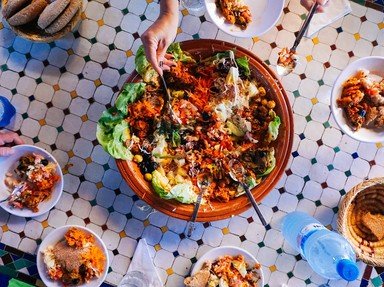Quiz Answer Key and Fun Facts
1. What is the process that jellifies liquid to form circular spheres?
2. Basic spherification is submerging a liquid with sodium alginate in a bath of Calcium.
3. Name the process of forming various textures of small gels with macromolecules.
4. Name the process of submerging a liquid with calcium content in a bath of sodium alginate.
5. Identify a technique that adds maltodextrin powder to a high fat liquid.
6. What is the name of the cooking appliance using a chilled metal range to flash freeze liquids?
7. Molecular gastronomists have created new innovations in food such as blood orange foam, transparent ravioli, cocktail ice spheres, hot ice cream, soy sauce crystals, and fried mayonnaise.
8. Recently discovered to be a true basic taste in the 21st century, which term now describes an additional taste component beyond sweet, sour, bitter and salty?
9. Name another technique for cooking and sealing food for many hours.
10. Who created the idea of molecular gastronomy?
Source: Author
Sari73
This quiz was reviewed by FunTrivia editor
WesleyCrusher before going online.
Any errors found in FunTrivia content are routinely corrected through our feedback system.

